How do you layer sheer and blackout curtains? The window dressing trick everyone should know
Expert advice on how to layer sheer and blackout curtains, from the type of drapes to choose to the right rod for the job
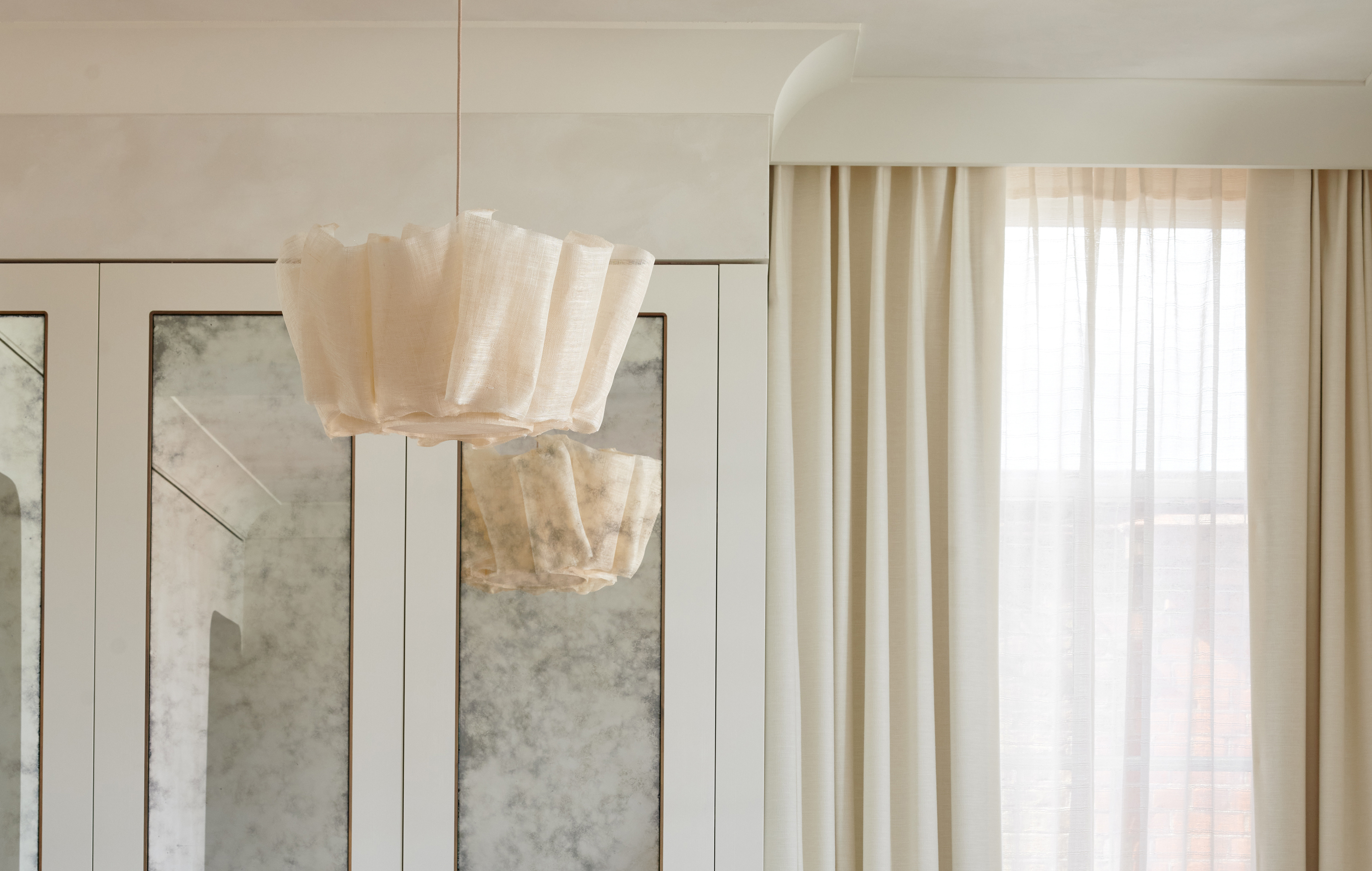

There's a reason top designers like to layer sheer and blackout curtains in rooms throughout the home. This clever design trick gives you better control of the light entering into a room, while also balancing the element of privacy. Plus, it doesn't hurt that it offers a beautiful aesthetic finish - with sheer curtains bringing a calming, ethereal quality to a space.
Blackout curtains are great for fully blocking out sunlight and noise, perfect for a bedroom where you want to fully shut off from the outside world, or a snug living room that you want to turn into a cinema space. What's more, they help keep the heat in, a great solution for insulating during the winter.
Yet, if hung without sheer curtains behind the blackout, it means you are limiting yourself to their full potential. Without sheer curtains, you commit to either full light in the room, or none at all - there is no in-between. We've asked the professionals for their advice on the best way to layer these two fabrics together to give yourself full control over this modern window treatment.

Oonagh is Livingetc.com's content editor and an experienced homes journalist with a wealth of expertise. In this article, she aims to find the best way for layering curtains to get the best of both worlds for rooms like bedrooms and living rooms.
How to layer sheer and blackout curtains
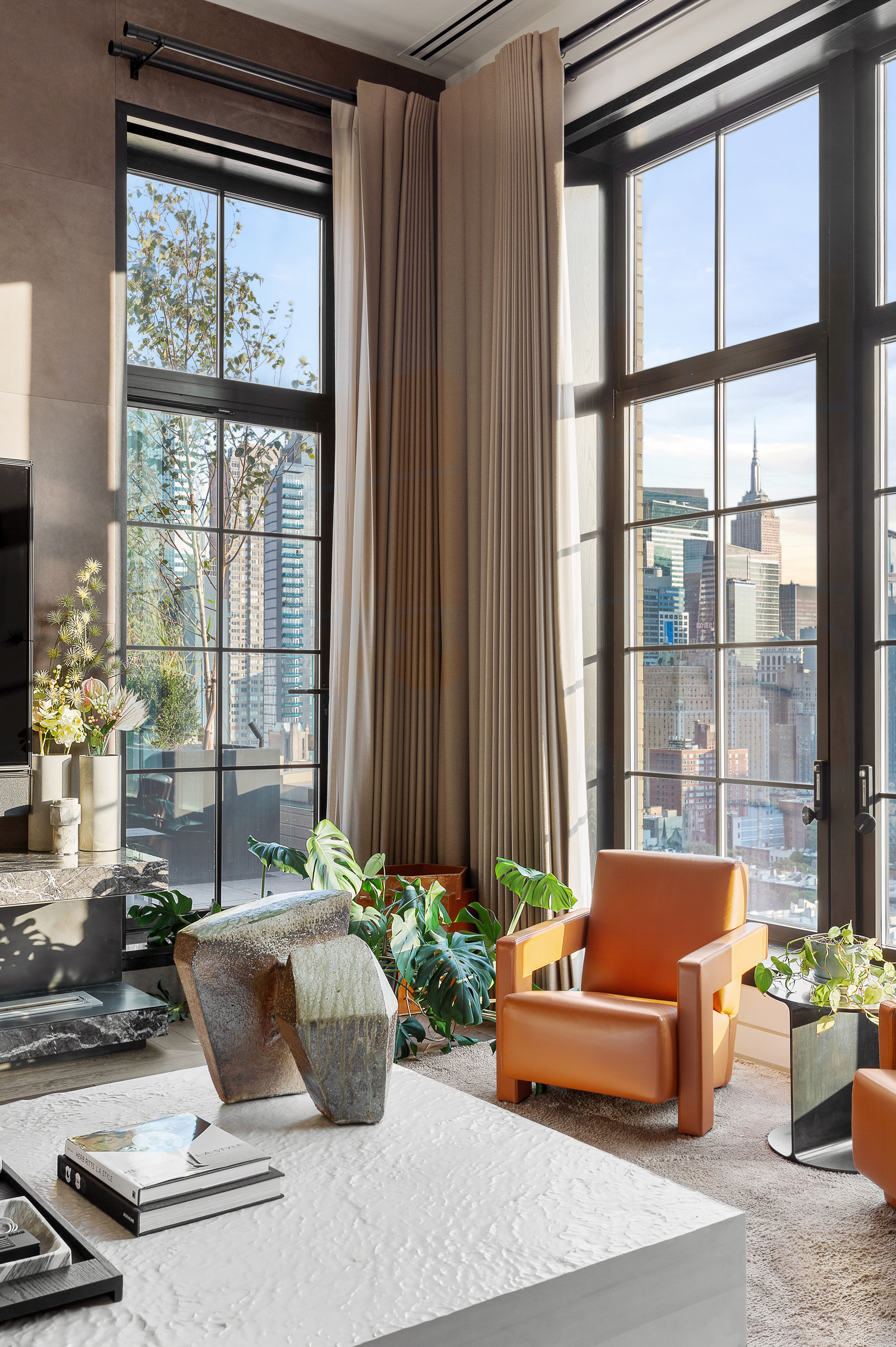
The Daily Show's Trevor Noah's New York apartment (listed by TopTenRealEstateDeals.com) features double rod hung sheer and blackout curtains.
So how best to layer sheer and blackout curtains? Two evenly spaced tracks or rods are required so they can be operated independently. 'A double rod is a great purchase if you're looking to layer your drapes. This hardware is made specifically for layering curtains and provides the best functionality and sleekest look,' says Davina Ogilvie, founder of Wovn Home. Usually, the sheer is closest to the window and the heavier fabric is on the inside so they are protected from sunlight. 'There is no reason you can't play with this order and have it the other way around, especially if you have a beautiful linen sheer that you want to see,' says Anne Hindley of Hindley & Co.
If opting for the traditional way round, with the sheer curtain against the glass, make sure you hang the sheer curtain rod as close to the ceiling as possible. This will help maximize the amount of natural light in the room. It's also crucial to make sure that the blackout curtains are long enough to reach the floor so that they can provide maximum coverage - so make sure you measure the curtains and cross reference against the wall beforehand.
What fabric works for sheer curtains?
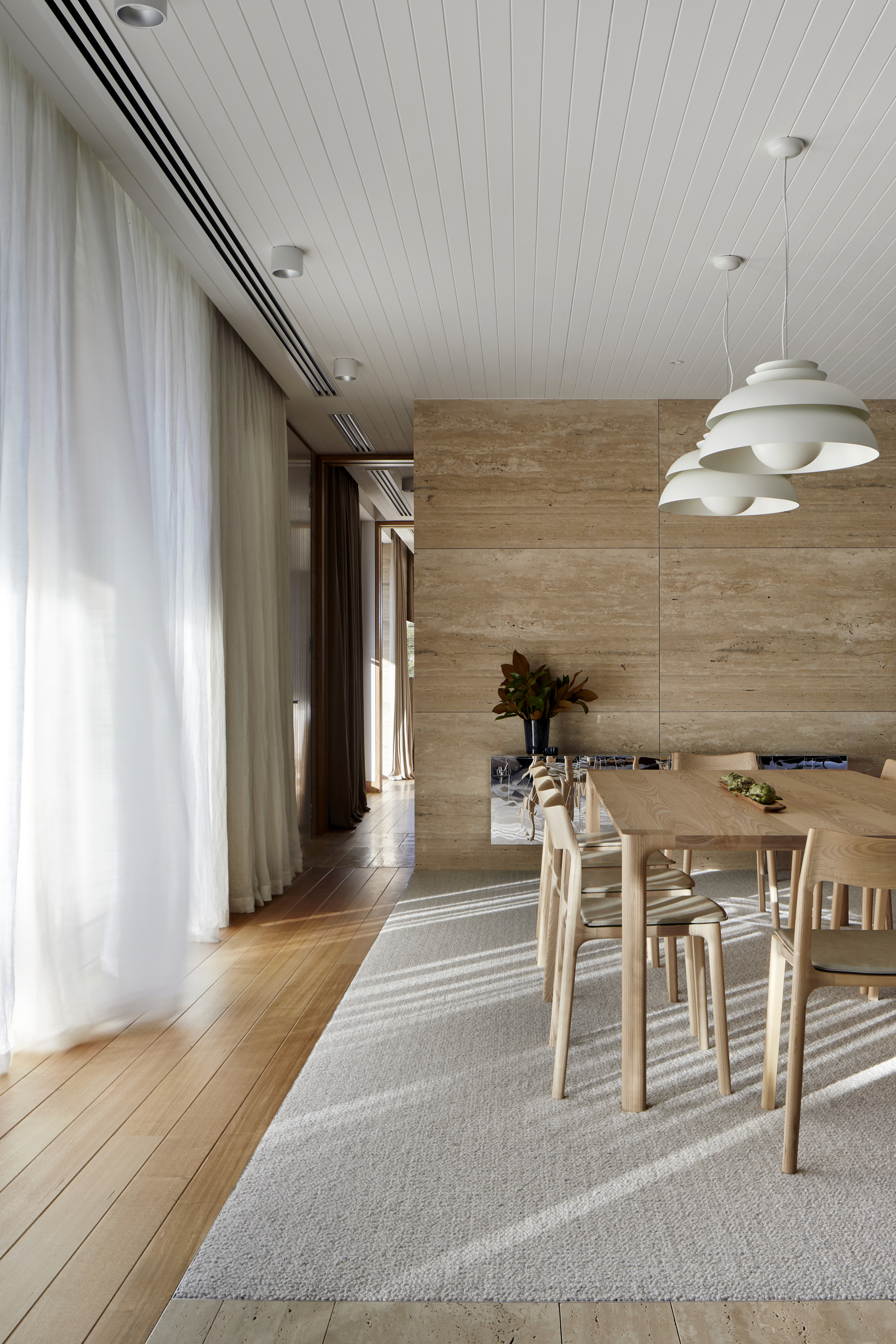
Sheer curtains alone are a trending curtain look as they can give a really beautiful look to a room. Silk, linen and other natural fibers tend to drape beautifully and give a light, summer curtain feel, while other synthetic materials can look stuff and formal. So make sure to go natural. 'Sheer curtains are also commonly made from cotton,' says Kate Diaz of Swanky Den.
When choosing a sheer curtain, it's important to think about the look you want to achieve, what material will best suit your needs and what room you are designing in - are you looking for living room curtains or a layered look for a cozy bedroom?. Cotton sheers are light and airy, while silk sheers have a luxurious look and feel. Polyester sheers are durable and less likely to wrinkle than other materials. 'Ultimately, it's up to you which material you choose for your sheer curtains. Make sure they match your room's decor and provide the optimum thickness for the privacy you need,' says Kate.
It's also important to think about how the sun might damage the curtain material. 'Linen sheers are the most beautiful, but natural materials do fade and warp in the sun, so putting them on the inside mitigates that. In Australia, the UV light is very strong, so whatever faces the sun will fade and discolor over time. This can be mitigated by choosing light color polyester linings, especially where they face west,' says Anne.
Bag yourself some sheer curtains, available in an array of colors, giving your room a lofty, airy feel and breezy look.
What fabric works for blackout curtains?
When considering your blackout bedroom curtains, think about the contrast between the heavier curtain and the sheer material. 'I often opt for a sheer and curtain fabric that have contrasting textures - a simple way to instantly add depth and compliment other fabrics in the space,' says Melissa Read, creative lead at Studio Burntwood .
Blackout curtains are meant to block light, so choosing the material is important. You'll want a heavy fabric that will not only keep out the light but will also insulate your windows in the winter and keep the heat in. Cotton and linen are good choices, but beware that they may not be as thick as some other materials and may not be as durable.
Velvet is a popular option because it is both thick and soft, and it doesn't let any light through. Polyester is another good option because it is durable and can be made to be blackout curtains.
What style of curtains works best for layering?
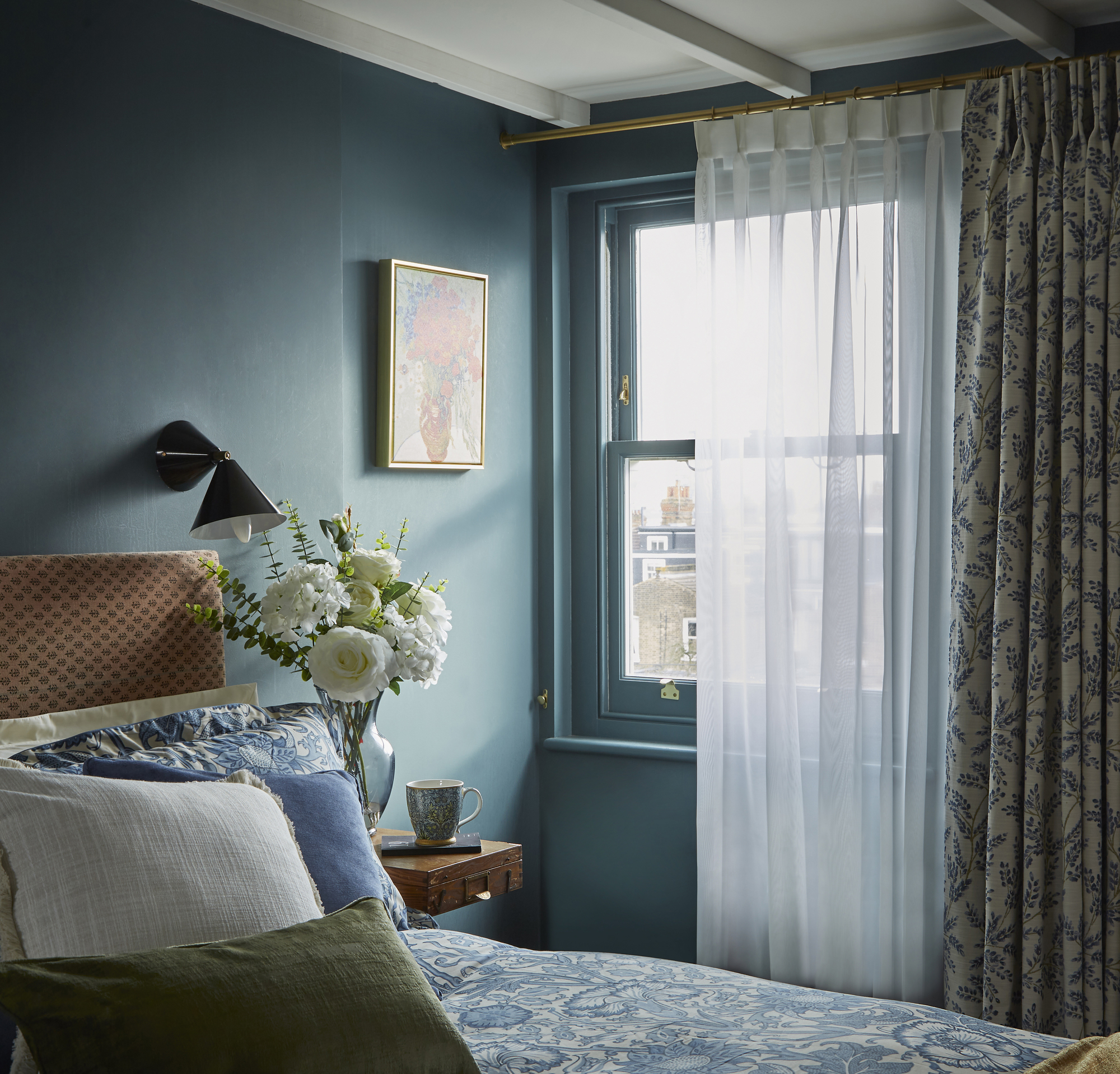
It's important to consider the style and the way you hang curtains too. If you want a more formal look, choose curtains with a rod pocket - a sewn-in pocket at the top of a curtain panel that easily slips over a rod and conceals it or grommet top - meaning metal rings punched into the fabric at the top of the panels that allow them to slide along the rod easily. For a more casual look, choose curtains with a tab top - exposed loops of fabric that look great for sheer on its own.
'Double pinch pleat headers on your blackout and voile curtains are great for creating that tailored and sophisticated finish, especially if the solid fabric is patterned as less fabric gathers in the folds,' says Yvonne Keal, an expert at window treatment brand Hillarys.
Also look at the type of rods out there. 'For a double curtain rod - go with a traverse rod or a continental rod.' For a single curtain rod - go with a standard or telescoping shower curtain rod,' says Kate.
How to choose colors when layering curtains
When it comes to shopping, think about the pattern and color of your curtains. Sheer curtains are available in a wide range of colors, so you can choose something that complements your decor. Blackout curtains are typically available in solid colors - think dark like burgundy, navy blue or forest green - you want something that helps block out light and coordinates well with your sheer curtains.
'It is also worth remembering that whilst light colors fare better in the sun, dark colored linings look better from the outside. Dark colors behind glass make a mirror, which can be employed to reflect the garden. So we might used dark coloured window coverings where they are south-facing or shaded on the north,' says Anne.
When layering drapes, it's best to keep the sheer a light neutral in order to avoid looking busy with the outer drapes, which can then be any color or pattern made with blackout lining,' adds Davina.
Be The First To Know
The Livingetc newsletters are your inside source for what’s shaping interiors now - and what’s next. Discover trend forecasts, smart style ideas, and curated shopping inspiration that brings design to life. Subscribe today and stay ahead of the curve.

Former content editor at Livingetc.com, Oonagh is an expert at spotting the interior trends that are making waves in the design world. She has written a mix of everything from home tours to news, long-form features to design idea pieces, as well as having frequently been featured in the monthly print magazine. She is the go-to for design advice in the home. Previously, she worked on a London property title, producing long-read interiors features, style pages and conducting interviews with a range of famous faces from the UK interiors scene, from Kit Kemp to Robert Kime. In doing so, she has developed a keen interest in London's historical architecture and the city's distinct tastemakers paving the way in the world of interiors.
-
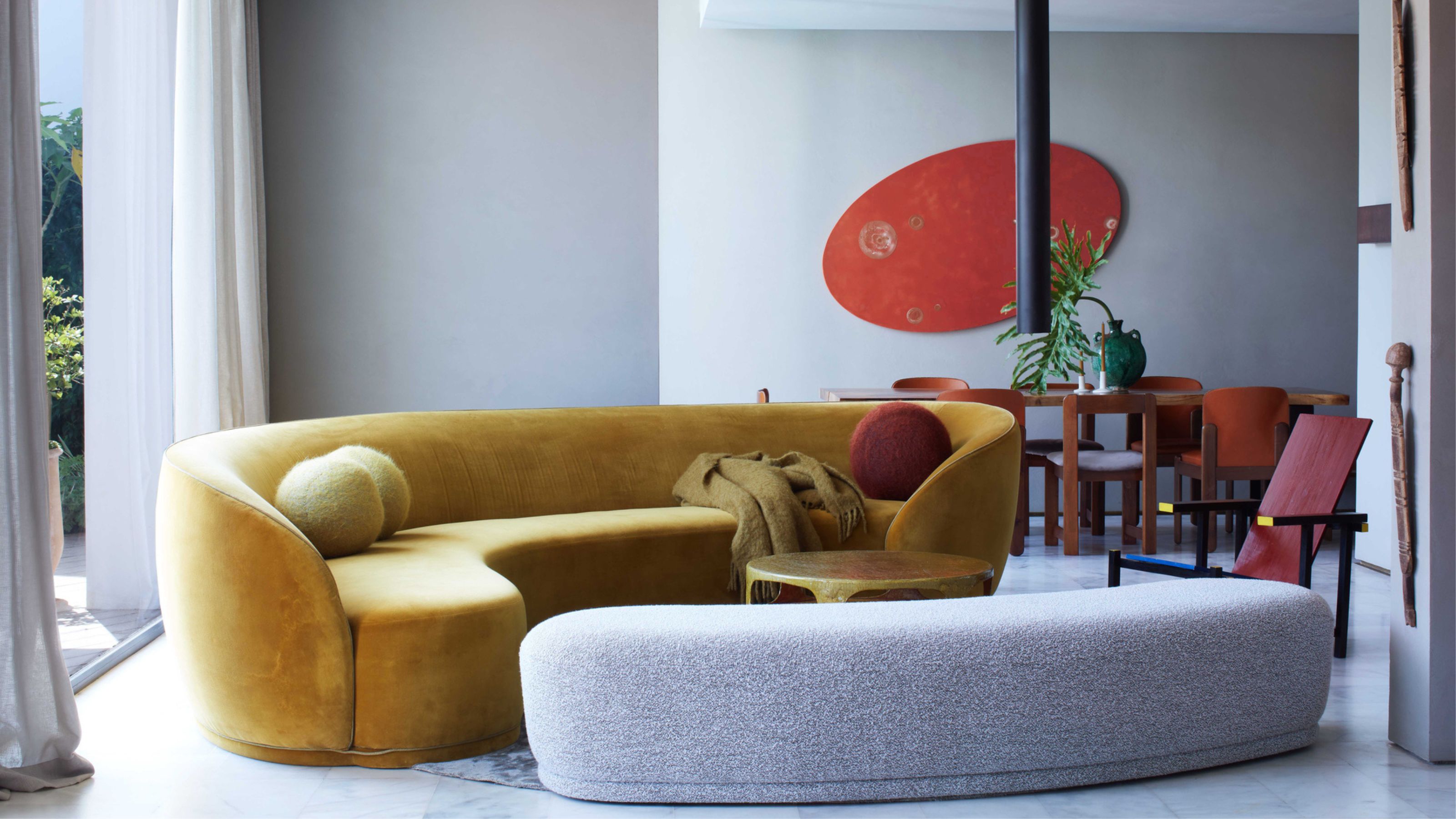 Why Decorating With Mustard Yellow Helps Fill Your Interiors With a Sense of "Confident Calm"
Why Decorating With Mustard Yellow Helps Fill Your Interiors With a Sense of "Confident Calm"There is so much more to decorating with this turmeric-tinted sauce-wiggled-on-a-hotdog not-quite-yellow shade than meets the eye
By Amy Moorea Wong Published
-
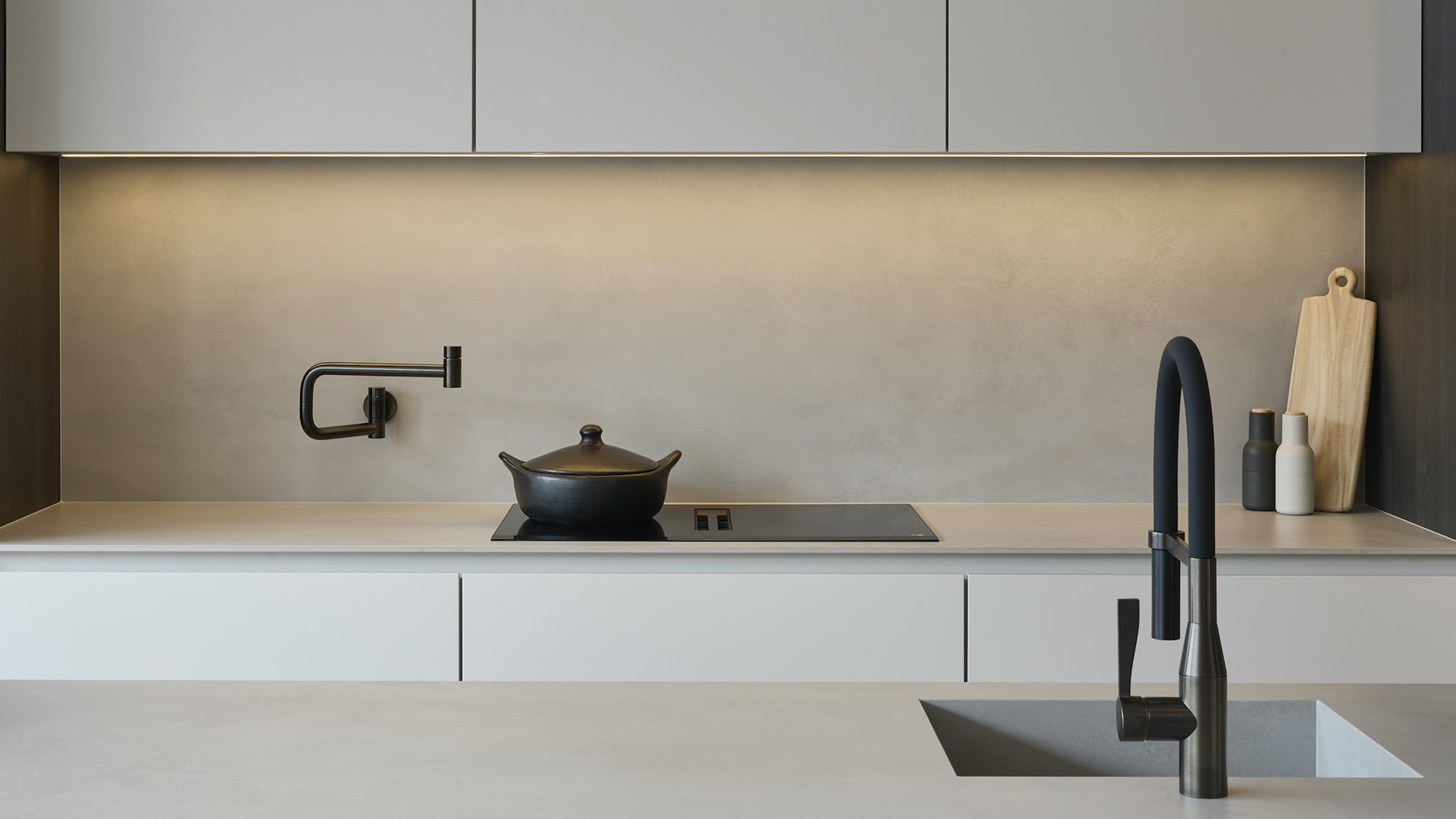 The 10 Different Types of Kitchen Taps — And the Pros and Cons of Each One to Know Before You Pick
The 10 Different Types of Kitchen Taps — And the Pros and Cons of Each One to Know Before You PickFrom sleek pull-outs to vintage bridge taps, explore 10 kitchen tap styles that mix function, flair, and a splash of cool
By Linda Clayton Published
